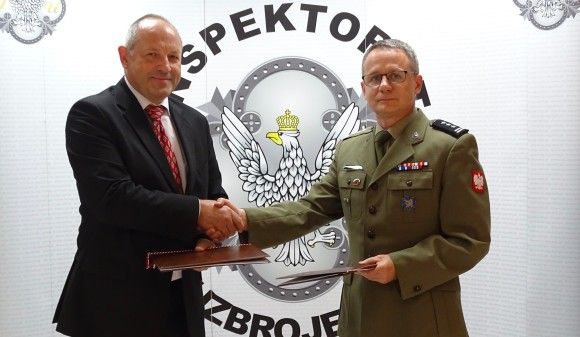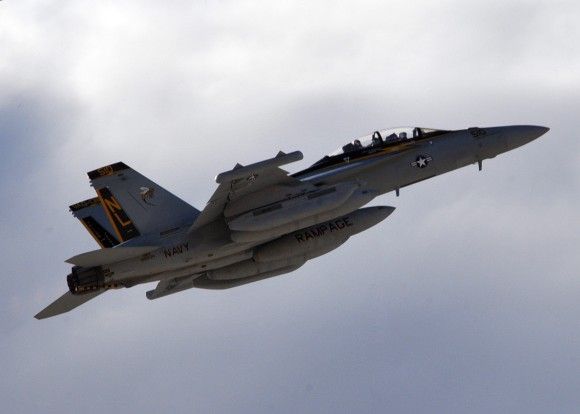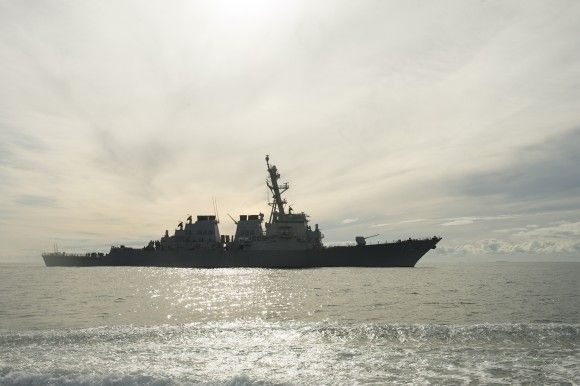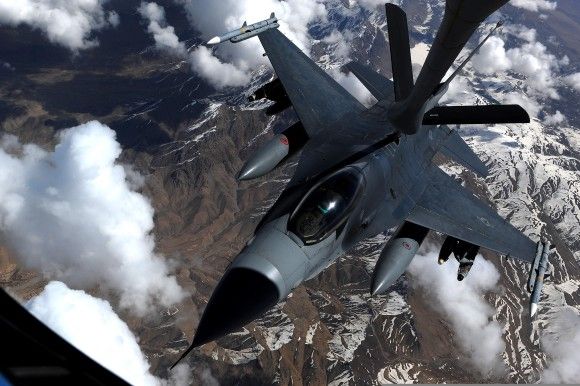Simulators in Support of the Field Army Training
Not only are the modern technologies required to develop a contemporary army, as training received by the soldiers putting those technologies into use is equally, or even more crucial. Meanwhile, a high level of training is based on several factors, including time, effectiveness of the training methods, as well as the economics of such undertaking. These are the relevant elements taken into account in case of military training. One of the methods allowing for effective implementation of training is to fuse the field training activities with the virtual training programme. The latter shall make use of modern simulation and training systems.
Despite the fact that modern systems and assets applied on the battlefield are effective, not only are they complex, but also expensive to operate. Full training of the crews often implies significant costs, requiring numerous intermediary stages to take place. The training is thus time-consuming.
The field training activities, or training undertaken at the garrison training centres requires proper conditions in which such educational process takes place. This is needed to make the training session as realistic as possible, with regards to conditions emerging on the modern battlefields. Quite frequently the above is difficult to achieve, for instance due to the availability of field training facilities, environmental limits or other norms adopted by Poland.
Furthermore, working towards enhancement of realism of training also entails extra cost of ammunition, simulation assets, fuels and oils, food or spare parts. Thus the soldiers shall receive preliminary preparation to be trained in field conditions. On the other hand, the garrison based training facilities have limits of their own, making the preparatory process even more difficult. This may, consequently, have a detrimental impact on effectiveness of the field training.
Modern technologies utilized within the training and simulation systems used for military applications may turn out to be of help in overcoming such difficulties. Such assets are available in a form of combat support systems and simulators.
The problem above was also spotted in Poland. This resulted in development and introduction of the System for Support of Combat Training (System Wsparcia Szkolenia Bojowego), also known as Śnieżnik, into the inventory of the Polish military. Śnieżnik has been designed and is currently manufactured by the Szczecin based Autocomp Management Sp. z o.o company, working closely together with the Zielonka Military Institute of Armament Technology (WITU).
Śnieżnik is a modular, continuously developed solution. The Treasury remains the ownership rights related to the system documentation, via the Armament Inspectorate of the Polish Ministry of Defence.
Śnieżnik provides the military with an ability to conduct most of the activities contained in the shooting and training curriculum, and this ranges from observation and target detection activities, with typical combat or situational scenarios to finish with. Tasks as such may be assigned with the learners using the required firearms and support weaponry, up to the level of an infantry element.
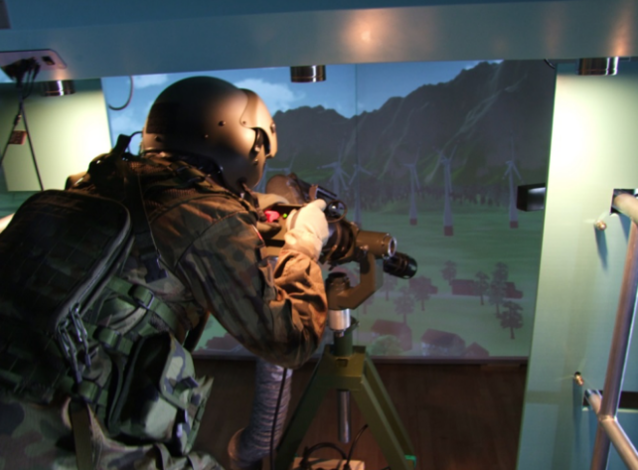
The software-embedded tactical scenarios may be a subject to expansion. Furthermore, the user may create entirely new scenarios, compliant with the training requirements. The manufacturer, in an ongoing manner, expands the weapons database and implements the remarks and feedback provided by the military.
The virtual battlefield of the Śnieżnik simulator allows for execution of tactical training, from the level of an infantry squad (individual soldier), through a platoon, up to the of company-level elements integration. When it comes to the tactical application, scenarios for defence, attack or other jointly conducted combat operations are available.
The scenarios, as well as the systemic environment, may be freely modified. In the latter case, we are referring to terrain conditions, replication of natural and artificial infrastructure, weather and time of day. After Action Review is one of the primary features available within the Śnieżnik system. Full analysis of the whole simulation is possible to be conducted afterwards.
Autocomp Management, together with the Military Institute of Armament Technology have also decided to further develop the whole system, currently offering a comprehensive suite. The system, as a whole, would form an expansive network of simulations, fusing the solutions offered to the other branches of the military or support elements. Such approach would provide interconnection between the systems that have been usually scattered so far, providing a coherent training of different branches of the military at the tactical level. The steps taken match the current trends and declared requirements, applicable in case of the modern systems for simulation and training, not only in the Polish Army.
Within the scope of use of combat equipment, the companies involved in the project propose that Rosomak APC simulators are used, in a form of trainers based on platforms with multiple degrees of freedom. This, to a significant extent, replicates the use of the actual platform. Similarly as Śnieżnik, the system is modular, it undergoes continuous modifications. It may also be used with other, similar solutions.
The simulator allows for repeating the given training scenario multiple times, in order to eliminate the possible errors that could be made by the trainees. Should the actual inventory kit be used this would be costly, moreover the equipment could also be a subject to excessive wear. The simulator system configured in this manner may be a base for similar solutions developed for other vehicular platforms operated by the Polish Armed Forces.

The new variants of the Śnieżnik system itself have also been enriched with new equipment and armament. ZU-23-2 and ZUR-23-2KG AAA/SAM systems simulator is one of the solutions proposed. The system makes it possible to train the crews in acting against airborne threats or ground targets that are expected to be neutralized with the use of such weaponry, e.g. light armoured vehicles or enemy troops.
The fire support module of the Śnieżnik system that simulates a mortar platoon (LM-60, M-98, M-120 or Antos mortars), makes it possible to train the soldiers within the scope of using and firing the support weaponry. The training may take place autonomously or in collaboration with forward observer station, also simulated in operation. There is also an option to conduct fire support procedures with the use of devices simulating the optronic observation and reconnaissance systems.
Helicopter gunner simulator has been designed with an intention of creating proper habits when firing a weapon from a helicopter, against ground and airborne targets, during a simulated flight.
All of the aforesaid systems are based on modular architecture and structure and use software that allows for efficient generation of 3D or 2D graphics and accurate representation of tactical and technical specifications of the simulated armament and ammunition.
The visualization suite, along with its software, accurately replicates animated objects also featuring partial effects. The system is capable of creating dynamic lights and shadows. The objects replicated retain a high degree of accuracy with regards to physics too. Thanks to all of the above factors the virtual space is highly detailed, same applies to the reproduced scenarios.
The devices discussed allow for replication of most of the terrain conditions present in Poland and around the world. The software offers an option of changing the weather conditions or presence of natural or artificial objects within the simulated scenarios. It remains possible to program some behaviours in case of the local community living in the area of operations. According to the assumptions, a certain degree of AI capabilities is also to be obtained in the individual components of the simulation systems.

The generated virtual environments may be tailored to the specifics of the peculiar mission, with an ability to create new objects, procedures and behaviours. These are, in an ongoing manner, being updated, in line with the evolution of needs and threats. They may be connected to a network for supervision and information exchange.
Such cooperation is possible through application of HLA (High Level Architecture) or DIS (Distributed Interactive Simulation) interfaces. The solutions proposed by the Autocomp Management company and by the Military Institute of Armament Technology allow for expanding the capacity to support combat training, within the scope of supporting and preparing the soldiers and commanders for the actual field training. Furthermore, utilizing such suites significantly reduces the cost of training itself.
The simulators also allow for conducting the fire training and tactical training sessions in a repeated manner, with review of the results and behaviours of the trainees. According to the basic assumption, such suites would ensure 24-hour-a-day availability of the training infrastructure, without any limits related to safety conditions emerging with regards to usage of ammunition or training aids. The use of simulators would also be diminishing the intensity of use of the combat equipment.
Both entities responsible for the Śnieżnik system are driven towards continuous development of knowledge and skills in the field of perfecting and creating the offered systems. Both companies are also motivated to secure the said systems from a variety of cyber-attacks. Finally, the companies would also like to continuously introduce new technologies into use within the simulators, which may be seen in implementation of AI based on neural networks and fuzzy logic. This would expand the simulator’s response capabilities to the actions undertaken by the trainees (autonomous reaction of the adversary AI).

